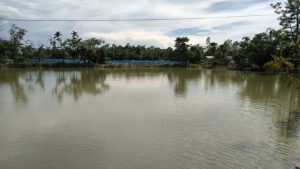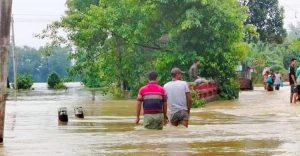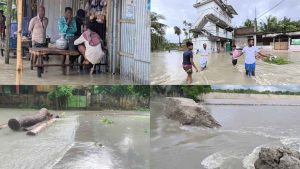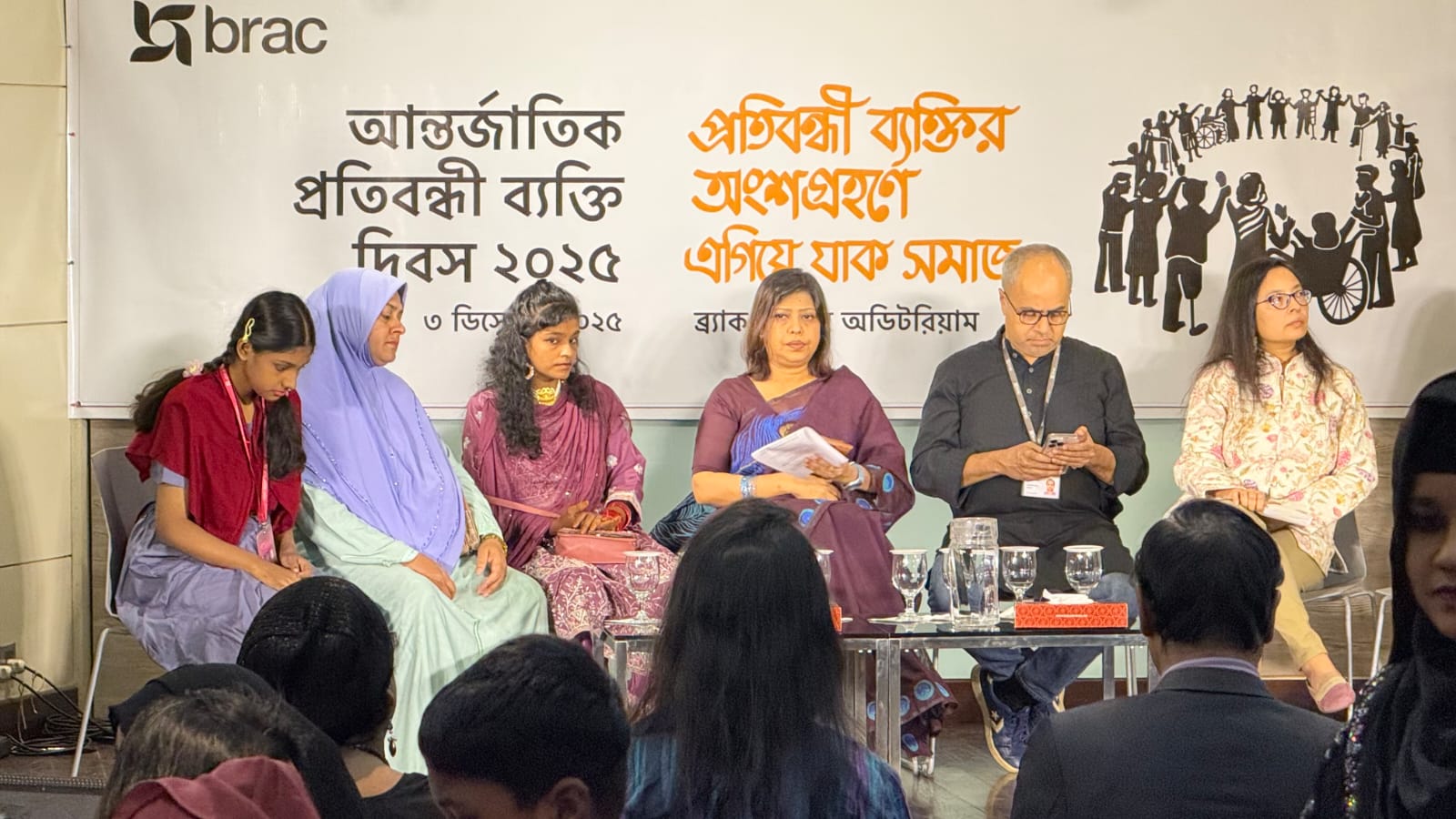Drowning Livelihoods: The Devastating Impact of Flash Floods on Bangladesh’s Fish Farming Industry

In the wake of relentless flash floods and torrential rains, Bangladesh faces a crisis that transcends environmental calamity. The nation’s aquaculture sector, a cornerstone of its economy and food security, has been severely impacted. This report delves into the widespread damage inflicted upon fish farming across the country, highlighting the challenges faced by communities and the urgent need for sustainable solutions.
A Nation Submerged
The recent spate of flash floods, exacerbated by heavy rainfall and upstream water surges, has left vast swathes of Bangladesh underwater. Coastal and low-lying districts such as Noakhali, Patuakhali, Bhola, Cox’s Bazar, Khulna, Barguna, and Barishal have borne the brunt of the deluge. In Noakhali’s Hatiya upazila, over 10,000 residents remain stranded due to disrupted communication lines, with hundreds of homes inundated and numerous fish farms washed away.
In Patuakhali, tidal surges and heavy rains have damaged 955 houses across eight upazilas. The fisheries and agricultural extension departments report that approximately 4,200 fish farms and 11,250 hectares of Aush seedbeds and Aman crops have been affected.

Economic Toll on Aquaculture
The fisheries sector, integral to Bangladesh’s economy and nutrition, has suffered unprecedented losses. In Bhola district alone, high tides have submerged vast areas, destroying 234 fish enclosures and washing away fish from 2,533 ponds, resulting in losses estimated in the millions.
Nationwide, the Department of Fisheries estimates that flash floods have caused damage worth Tk 1,899 crore by affecting 197,166 fish farms. This includes the destruction of 107,517 tonnes of fish and shrimp across 12 districts.
In the northeastern regions, particularly Sylhet, Sunamganj, and Moulvibazar, over 13,600 ponds have been washed away, incurring a loss of BDT 1.34 billion, with Sylhet alone accounting for BDT 1.01 billion.
Voices from the Ground
Mohammad Ali, a fish farmer from Sherpur, shared his plight: “I had taken the lease of an acre of land to set up a fish farm and invested nearly Tk 7 lakh by taking a bank loan. The floods washed away all the fish. Now, I’m left with nothing but debt.”
In Ashashuni upazila of Satkhira district, the collapse of a temporary ring embankment during river dredging led to the flooding of over 400 bighas of fish farms. Local fish farmers are facing losses of at least Tk 2 million. Rahmat Ali, a resident, expressed his concern: “A large section of land near my house collapsed suddenly under the pressure of the tide. If the breach isn’t repaired before the high tide tonight, there’s a real danger that the main embankment could be breached too, submerging more areas.”

Impact on Exporters and Businessmen
The floods have not only affected local farmers but also exporters and businessmen in the aquaculture sector. Bangladesh, being the third-largest global producer of farmed fish, exports to over 50 countries, including major markets like the EU, the US, and Japan. However, the recent floods have disrupted supply chains and raised concerns about meeting international demand.
Dia Sanou, Deputy Representative of FAO Bangladesh, highlighted the challenges: “Bangladesh faces growing challenges with chemical contamination in aquaculture products, particularly from banned drugs and other chemicals, leading to significant economic impacts and a loss of customer confidence.”
Infrastructure and Environmental Challenges
The floods have not only devastated aquaculture but also crippled infrastructure. A situation report indicates that the floods submerged 311,419 hectares of land, destroyed 6,542 km of roads and 1,066 bridges and culverts, and disrupted transport networks.
In Satkhira, the collapse of a temporary ring embankment during river dredging led to the flooding of over 400 bighas of fish farms, with local fish farmers facing losses of at least Tk 2 million.
Humanitarian Impact
The human cost of these floods is staggering. Over 5.8 million people have been affected, with approximately 502,501 displaced and residing in evacuation shelters. The loss of livelihoods has plunged many into poverty, with small-scale and marginalized farmers, who make up 76% of Bangladesh’s farming community, being the most vulnerable.
Relief and Recovery Efforts
In response to the crisis, the Food and Agriculture Organization (FAO) of the United Nations, with support from the Government of the Kingdom of Belgium, has mobilized resources to restore food security and livelihoods. FAO is providing agricultural inputs such as seeds, fertilizers, and tools to 9,050 farming households, benefiting around 45,200 individuals in Bhola, Noakhali, Feni, Cumilla, and Khagrachhari districts.

Additionally, FAO is assisting 10,800 livestock farming households with nutrient-enriched livestock feed in Khulna, Barguna, and Patuakhali districts. These efforts aim to help affected communities restart crop and vegetable production and rebuild their livelihoods.
Long-Term Solutions and Climate Resilience
The recurring nature of such disasters underscores the need for long-term solutions. Investments in climate-smart aquaculture, including resilient infrastructure and sustainable practices, are essential. Studies suggest that hard and soft climate-smart investments in aquaculture can mitigate the impact of floods, heavy rainfall, and other climate-induced challenges.
Furthermore, improving emergency response systems, ensuring equitable relief distribution, and increasing budgetary allocations for disaster preparedness are critical steps toward enhancing resilience.
Conclusion
The devastating impact of flash floods and heavy rains on Bangladesh’s fish farming industry is a stark reminder of the nation’s vulnerabilities in the face of climate change. As the country grapples with the immediate challenges, there is an urgent need to invest in sustainable and resilient practices to safeguard the livelihoods of millions and ensure food security for the future.






















